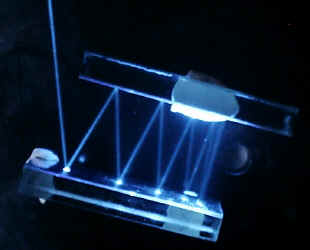- Joined
- Dec 31, 2012
- Messages
- 904
- Points
- 0
I am trying to figure out if one of these mirrors is curved? Or is it just that the two mirrors are not in parallel? The beam seems to end, on the right side, suggesting its bouncing back and forth to infinity.
Any comments?

Any comments?



